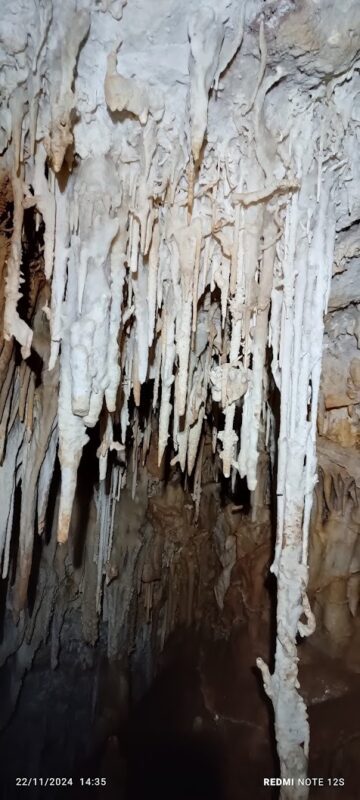Pigeon Cave (Hampoil Cave): A wonder in the heart of the mountain
Pigeon Cave, also known as Hampoil Cave, is one of the deepest and most amazing caves in Iran, which is located 15 kilometers southeast of Maragheh and near the village of Taze Kand Sofli. This cave with a large opening and magnificent entrance attracts many tourists and cavers every year.
A deeper look at Pigeon Cave:
Cave opening:
The mouth of the Pigeon cave is 8 meters wide and 25 to 40 meters high, located on a rocky mountain slope.
At the entrance of the cave, there is a deep chasm, which is called Pigeon Cave due to the presence of pigeon waste.
To enter the cave, you must use caving equipment and supplies.
Halls and wells:
Pigeon cave has two large fields or halls and several deep wells.
In the first hall, two holes and a depression can be seen, indicating the existence of four deep wells.
The depth of the wells reaches up to 40 meters, and advanced caving equipment and skills are needed to navigate them.
In the second hall, there is a narrow corridor that continues into the cave and deeper wells.
Deposits and decorations:
The walls and ceiling of the pigeon cave are decorated with beautiful limestone deposits and stalactites.
These sediments have been created over thousands of years due to the sedimentation of flowing water in the cave.
The presence of stalactites and stalagmites in the cave has given it an amazing and unique effect.
The importance of pigeon cave:
Pigeon cave is of great importance in terms of geology and tourism.
As one of the deepest caves in Iran, this cave is of interest to professional cavers.
The presence of limestone deposits and decorations in the cave has increased its scientific and tourism value.
Pigeon cave can play an effective role in the economic prosperity of the region as a natural tourist attraction.


